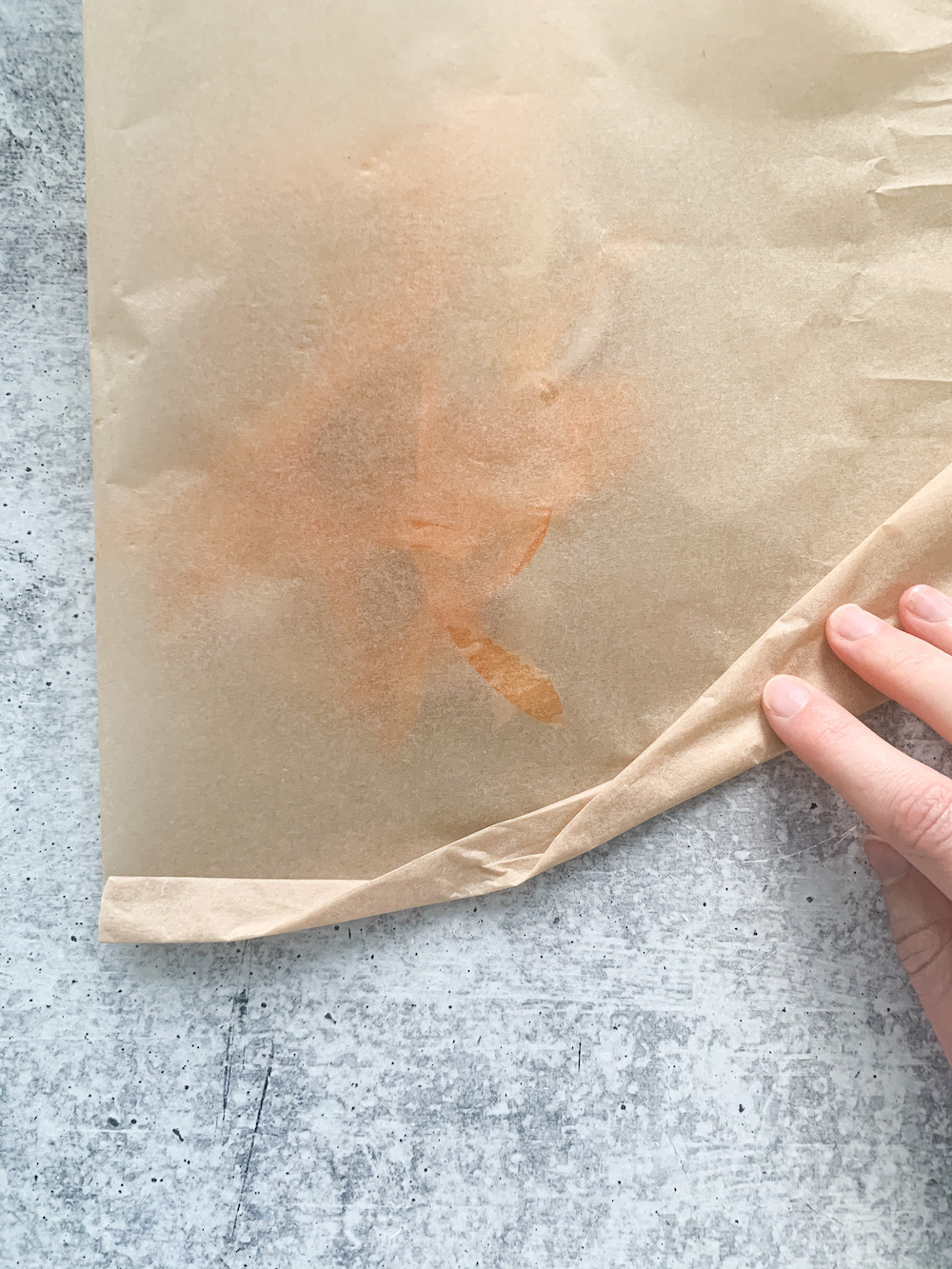How to Make Fish En Papillote (Without a Recipe)
Fish en papillote is a fancy-sounding dish that’s fun to make and easy-to-customize. Not only does it taste amazing, but it’ll boost your kitchen confidence, too!

I first made this meal in culinary school and then taught a hands-on cooking class for my friends and they all loved it.
What is Fish En Papillote?
En Papillote means ‘in paper’ in French. So, fish en papillote simply means cooking fish in a pouch made out of parchment paper.
The pouch creates a seal that steams the fish.
Because it’s very easy to overcook fish, this is a fairly foolproof method for consistently moist and tender cooked fish.
Ingredients You’ll Need
Fish
- Whitefish such as cod, halibut, tilapia, sole, and sea bass are most commonly used for this method. However, you can also use salmon, trout, mackerel, etc. Just make sure the skin is removed before or after cooking.
Healthy fat
- Olive oil or butter works well for brushing the fish. You can also drizzle more over the top of everything before sealing the pouch.
Vegetables
- Quick-cooking and tender vegetables are the best. So things like leafy greens, zucchini, asparagus, mushrooms, peppers, fennel, bok choy, peas, or thinly sliced potatoes. Halved cherry tomatoes (technically a fruit) are also a great addition.
Citrus
- Citrus works really well with fish and helps to tenderize it. Adding fresh lemon, lime, or orange slices on top of the fish or a squeeze of the juice adds brightness as well as flavor.
Flavoring
- Adding pantry items like sundried tomatoes, olives, capers, or quick-pickled vegetables on top of the fish is a great way to add lots of umami/savory goodness.
Herbs
- Another option is to use fresh herbs to infuse the fish. You can add whole sprigs of thyme, rosemary, oregano, sage, or dill inside the pouch. Or once cooked top with delicate herbs like basil, parsley, mint, cilantro, or tarragon.
Aromatics
- Thinly sliced onions, shallots, ginger, or garlic all work well.
How to Make Fish En Papillote
Get the Paper Ready
For each piece of fish you use, cut a piece of parchment paper roughly 16-18 inches long. Fold in half and push into a creased line.
Open up the folded parchment paper on your counter. In the middle, just to the right of the creased line is where you’ll start putting your fish and toppings.
Prepare the Filling

- Cut any vegetables that need to be sliced smaller for quicker cooking.
- Using leafy greens? Put them down first, and then nestle the fish on top of them.
- Not using any greens? Just put the fish down first and season with a little oil (or butter), salt, and pepper.
- Toppings. Add any citrus slices directly on top of the fish. And now add your other ingredients to the top (making a small tower).
- Acid (optional). Top with an optional squeeze of lemon juice or a splash of vinegar.
Seal the Pouch
In order for the fish and vegetables to steam, the pouch needs to be sealed. To do this, take the left half and close it over the top (like you’re closing a book).
Now create your seal by starting at the bottom edges making overlapping creases with your finger until it’s completely enclosed in a half-circle shape. Place the pouch(es) directly onto a baking sheet.




Cook the Fish En Papillote
Cook the fish at 425ºF for 10 minutes if your fillet is thin and 13-16 minutes if it’s a thick fillet (1 inch or more).
The pouches puff up when cooking, which is the steam trapped inside (and the reason the fish is so moist).
Serve
To serve, put the parchment pouches directly onto each serving plate. Use a sharp pairing knife or scissors to cut the pouch open, and watch the steam pour out.
Eat directly out of the parchment paper.
Helpful Tips
- Slice your vegetables thin. The cooking time is short, so in order for the vegetables inside the pouch to get cooked through, you want them to be thinly sliced.
- Seasoning the fish. Steamed fish can be quite bland on its own. Unlike stovetop cooking, it’s not getting any flavor from caramelization, so adding just a few additional seasonings is essential to getting the best flavor.
- How to avoid overcooked fish. The fish continues to cook in the steamed pouch until you cut it open, so keep this in mind if you don’t plan on serving it right away.
- How to serve it. You can serve this dish by itself, or alongside fennel salad, with roasted butternut squash, or with a grain such as rice, quinoa, or farro.
More Kitchen Basics You’ll Love
- How to Make a Simple Vinaigrette Dressing
- How to Make a Healthy Breakfast Hash
- How to Make the Best Caramelized Onions


